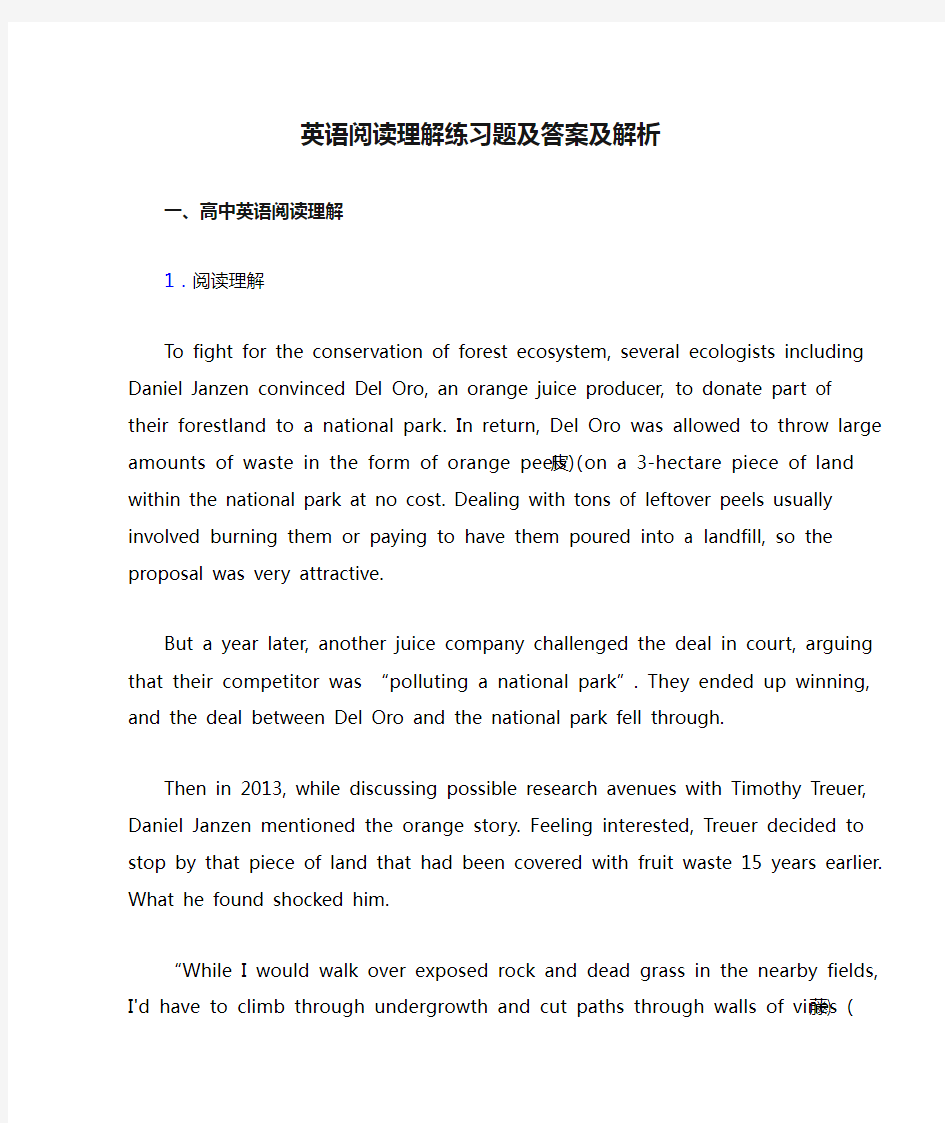
英语阅读理解练习题及答案及解析
- 格式:doc
- 大小:153.50 KB
- 文档页数:17


英语阅读理解练习题及答案及解析
一、高中英语阅读理解
1.阅读理解
To fight for the conservation of forest ecosystem, several ecologists including Daniel Janzen convinced Del Oro, an orange juice producer, to donate part of their forestland to a national park. In return, Del Oro was allowed to throw large amounts of waste in the form of orange peels (皮) on a 3-hectare piece of land within the national park at no cost. Dealing with tons of leftover peels usually involved burning them or paying to have them poured into a landfill, so the proposal was very attractive.
But a year later, another juice company challenged the deal in court, arguing that their competitor was “polluting a national park”. They ended up winning, and the deal between Del Oro and the national park fell through.
Then in 2013, while discussing possible research avenues with Timothy Treuer, Daniel Janzen mentioned the orange story. Feeling interested, Treuer decided to stop by that piece of land that had been covered with fruit waste 15 years earlier. What he found shocked him.
“While I would walk over exposed rock and dead grass in the nearby fields, I'd have to climb through undergrowth and cut paths through walls of vines (藤) in the orange peel site itself.” said Timothy Treuer.
Treuer and his team spent months picking up samples (样品), analyzing and comparing them. They found great differences between the areas covered with orange peels and those that were not. The area with orange waste had richer soil.
The effect that the orange peels had on the land is probably not that surprising to people familiar with composting (施肥), but what is really shocking is that a judge actually thought the waste of orange “mined” a national park and stopped it from going forward. Now that Timothy Treuer's study has received worldwide a ttention, this type of “ruining” is being seriously considered as a way of bringing forests back to life.
(1)What did Del Oro usually do with orange peels?
A. Add them to fuel.
B. Throw them into a national park.
C. Bum or bury them.
D. Make them into cakes.
(2)What can we know about the deal between Del Oro and the national park?
A. It lasted 15 years.
B. It was signed by Treuer.
C. It was made in about 1998.
D. It was broken by Del Oro.
(3)What was Treuer's finding?
A. Orange peels contain much fibre.
B. Orange peels can make soil richer.
C. Orange peels rot away in a short time.
D. Orange waste ruined the national park.
(4)What is the author's attitude toward the judge mentioned in the last paragraph? A. Disapproving. B. Positive. C. Worried. D. Admirable.
【答案】(1)C
(2)C
(3)B